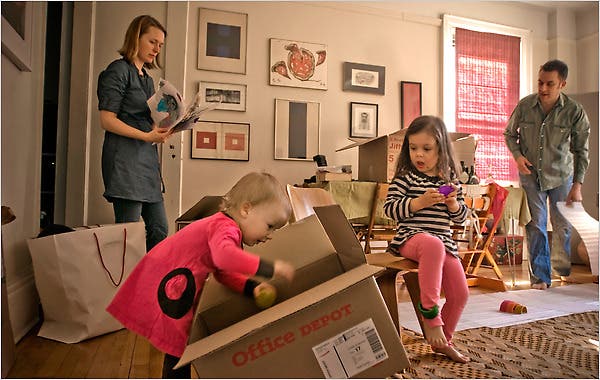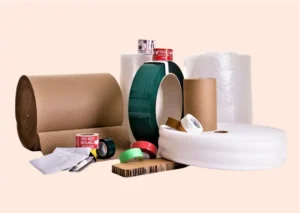Table of Contents

Key Takeaways
-
Understanding the full scope of moving costs is crucial; they can range from the obvious like hiring movers, to the hidden, such as temporary storage.
-
Stress can be mitigated by thorough planning and organization, starting with a clear moving checklist.
-
Exploring the positives of moving, like growth opportunities, can motivate and provide a positive outlook on the process.
-
Being aware of the potential emotional and financial downsides prepares you for a realistic moving experience.
-
Choosing the right moving help, whether professional services or a self-move, can greatly influence your budget and stress levels.
Setting the Stage: House Moving Essentials
When it comes to moving, the devil is in the details. From the moment you decide to move to the time you settle into your new home, there’s a lot to consider. First things first, let’s understand what’s involved in the moving process and how it can impact you both financially and emotionally.
Understanding the Moving Landscape
Moving isn’t just about transporting items from point A to B; it’s about managing time, budget, and emotions. There are services to disconnect, addresses to change, and a new community to join. It’s a complex landscape, but with the right knowledge, you can navigate it smoothly.
Key Factors Influencing Your Move
Several factors will dictate the complexity and cost of your move:
-
Distance: Are you moving across town, to a new state, or even a different country?
-
Volume of Belongings: The more you have, the more it costs to move.
-
Time of Year: Peak moving seasons can drive up costs.
-
Additional Services: Packing, unpacking, and storage services add to the budget.
Each of these elements can either ease or complicate your moving experience. Therefore, understanding them is the first step in planning a successful move.
Mapping Out the Pros of House Moving
|
Pros of Moving House Often |
Cons of Moving House Often |
|---|---|
|
1. Fresh Start |
1. Saying Goodbye to Friends |
|
2. New Opportunities |
2. Time and Effort |
|
3. Personal Growth |
3. Financial Considerations |
|
4. Minimalistic Lifestyle |
New Beginnings: Exploring the Benefits
Despite the challenges, moving house has its perks. It’s a time for decluttering, which can be incredibly liberating. You’ll also get to design and organize a new space, which is a chance to refresh your living environment and, by extension, your life.
Economic Decisions: Cost Savings Strategies
Believe it or not, moving can be an opportunity to save money in the long run. For instance:
-
Downsizing can reduce living expenses.
-
Relocating to an area with a lower cost of living can stretch your budget further.
-
Some employers offer relocation assistance, which can cover a significant portion of moving costs.
By viewing the move as a chance to reassess your finances, you can turn a potentially stressful situation into a financially strategic one.
And let’s not forget about the personal growth that comes with a new environment. You’ll have the chance to meet new people, possibly pursue different career opportunities, and expose yourself to new experiences and ideas.
The Financial Burden of Relocation
Let’s talk money because, let’s face it, moving isn’t cheap. The costs can stack up quickly, from hiring movers to paying for packing materials and possibly even insurance for your valuables. It usually costs a few hundred to a few thousand dollars to move, depending on how far you’re going and how much stuff you have. For example, a local move might only set you back $800 to $2,000, while a long-distance move can easily cost $4,000 to $10,000 or more.
It’s not just the obvious costs you need to consider. There are often hidden expenses like:
-
Security deposits or first month’s rent for renters
-
Cleaning fees for your old residence
-
Utility setup or transfer fees
-
Temporary storage if your new home isn’t ready
These can add up, so it’s important to budget carefully. A moving budget should include every foreseeable expense to avoid unpleasant surprises.
The Emotional Journey: Stress and Adaptation
Moving house is more than just a physical transition; it’s an emotional one, too. It’s normal to feel a mix of excitement and anxiety. You’re not just changing your address; you’re leaving behind the familiar and venturing into the unknown. For kids and pets, this can be particularly stressful as they rely heavily on routine and familiarity.
To help manage the emotional toll, keep communication open with family members and involve everyone in the moving process. Also, try to maintain some of your old routines to give a sense of continuity amidst the change.
Navigating the Practical Hurdles
There’s a practical side to moving that requires your attention. You’ll need to transfer school records if you have children, update your address with government agencies, and possibly navigate the complexities of selling your old home while purchasing a new one. It’s like a big puzzle, and every piece needs to fit perfectly for a smooth transition.
Organize all your important documents in one place, and create a checklist of all the institutions, companies, and people you need to notify about your move. This will help you avoid last-minute scrambles and ensure you don’t overlook anything important.

Planning Your Move: A Step-by-Step Guide to Reduce Stress
Planning is the antidote to stress. A well-thought-out moving plan can make the difference between a chaotic move and a smooth one. Start planning as early as possible, ideally several months in advance, to give yourself plenty of time to handle everything without rushing.
Creating a Moving Timeline
A moving timeline is your roadmap to a stress-free move. It outlines what needs to be done and when, helping you stay on track. Here’s a basic timeline to consider:
-
2-3 months before the move: Research moving companies, gather quotes, and book your movers. Begin decluttering and selling or donating items you don’t want to take with you.
-
1-2 months before the move: Start packing non-essential items and continue decluttering. Notify important parties of your upcoming move.
-
2-4 weeks before the move: Confirm details with your moving company. Pack most of your belongings, leaving only the essentials unpacked.
-
1 week before the move: Pack an essentials box with items you’ll need immediately upon arrival at your new home.
-
Moving day: Do a final walkthrough of your old home, make sure everything is packed, and hand over the keys.
Itemizing Your Belongings: The Essentials
As you pack, create an inventory of your belongings. This not only helps you keep track of your items but also assists in determining the right amount of moving insurance coverage you may need. Label your boxes clearly and keep a list of what’s in each one. This will make unpacking a breeze.
Budgeting for the Move: Hidden Costs Revealed
When setting your moving budget, don’t just think about the moving company’s fee. Consider additional costs like hidden expenses that can sneak up on you.
-
Packing materials
-
Temporary accommodations if needed
-
Food and travel expenses during the move
Remember, it’s better to overestimate your moving budget than to be caught off guard by unexpected expenses.
Choosing the Right Help: Movers and Packers
Deciding between professional movers and a DIY move is a big decision that impacts both your budget and your stress levels. Professional movers can take a lot of the physical and mental load off your shoulders, but they come at a cost. A DIY move might save you money, but it requires a lot more time and effort.
How to Spot Reliable Moving Services
When looking for a moving company, don’t just go for the cheapest option. Look for reliability and good service. Here are a few tips:
-
Check reviews and ratings online
-
Ask for recommendations from friends or family
-
Ensure they are licensed and insured
-
Get a detailed quote and ask about any additional fees
It’s essential to trust the people who are handling your worldly possessions. A little research upfront can save a lot of headaches later. For more information, read our guide on calculating and reducing moving expenses.
Cost Comparisons: Finding an Affordable Solution
Get quotes from multiple moving companies to compare costs. But remember, the cheapest quote isn’t always the best. Weigh the costs against the services provided and choose a company that offers the best value for your money.
For example, one mover might charge more but include packing services and insurance, while another might seem cheaper but add fees for those services later.
Do-It-Yourself Moving: Pros and Cons
If you’re considering a DIY move, weigh the pros and cons carefully. The pros include:
-
Complete control over the moving process
-
Potentially lower costs
-
Flexibility in timing and packing
However, the cons might include:
-
Physical strain of packing and lifting
-
Time-consuming process
-
Potential for injury or damage to belongings
Consider your personal circumstances, such as the amount of belongings you have, your physical ability, and your budget before making a decision. For more insights, read about the pros and cons of moving.
After the Move: Settling Into Your New Home
Once you’ve arrived at your new home, the work isn’t over yet. Unpacking and setting up your new space takes time and effort. But it’s also a chance to make the place your own. Start with the essentials like your bedroom and kitchen, and then work your way through the rest of the house. For some helpful moving day tips, consider how you can organize and streamline the process to make settling in as smooth as possible.
And don’t forget to explore your new neighborhood! Introducing yourself to neighbors, finding your new favorite coffee shop, and locating the nearest grocery store can all help make your new place feel like home.
Remember, moving is a marathon, not a sprint. Take it one step at a time, and before you know it, you’ll be settled in and ready to start this new chapter of your life.
Establishing Your New Routine
Once the dust settles and the last box is unpacked, establishing a new routine is paramount. This helps to bring a sense of normalcy and can ease the stress that comes with change. Start simple: set up meal times, define your grocery shopping days, and if you have children, get them into a consistent school routine. Your new routine doesn’t have to mirror your old one. This is a chance to reinvent and improve your daily structure.
Community Engagement: Making New Connections
Becoming part of your new community can be incredibly rewarding. It’s an opportunity to forge friendships, network professionally, and feel at home in your new surroundings. Here’s how you can start:
-
Attend local events and gatherings.
-
Join community groups or clubs that align with your interests.
-
Volunteer for local organizations to meet people and give back.
These activities can help you integrate into your new environment and find your place within it. Plus, they’re a great way to combat any feelings of homesickness or isolation that might arise after the move.

Frequently Asked Questions
How can I reduce the costs associated with moving?
Reducing moving costs requires a mix of planning, research, and a bit of savvy. Here’s what you can do:
-
Declutter before you move to reduce the volume of items.
-
Compare quotes from several moving companies to find the best deal.
-
Move during off-peak seasons to take advantage of lower rates.
-
Collect free moving boxes from local stores or online marketplaces.
-
Consider a DIY move if you have the time and resources.
By being proactive and looking for savings opportunities, you can significantly cut down on moving expenses.
What steps can I take to minimize stress during a move?
Minimizing stress is all about staying organized and giving yourself enough time to manage the process. Here’s a quick guide: for more detailed strategies, consider reading about managing moving stress to stay calm and collected.
-
Create a detailed moving checklist and timeline.
-
Start packing early, beginning with items you use less frequently.
-
Keep important documents and valuables in a safe, easily accessible place.
-
Make arrangements for children and pets on moving day.
-
Set up utilities and services in your new home before you arrive.
With these steps, you’ll feel more in control and less overwhelmed by the tasks at hand.
How far in advance should I plan my move?
Generally, you should start planning your move at least two to three months in advance. This gives you enough time to research movers, declutter, and begin packing without rush. For long-distance or international moves, consider giving yourself even more time to accommodate the additional logistics.
Is it worth hiring professional movers or should I move myself?
Whether to hire professional movers or to move yourself depends on several factors, including your budget, the complexity of the move, and your physical capacity. Professional movers can alleviate a lot of the stress and physical labor, but they come at a higher cost. A DIY move can save money but requires more time and effort. Weigh the pros and cons and consider what’s most valuable to you: your time or your money.
How can I ensure the safety of my belongings during the move?
To ensure the safety of your belongings, consider reading our ultimate guide on moving company prices which includes tips on how to choose a reliable moving service.



